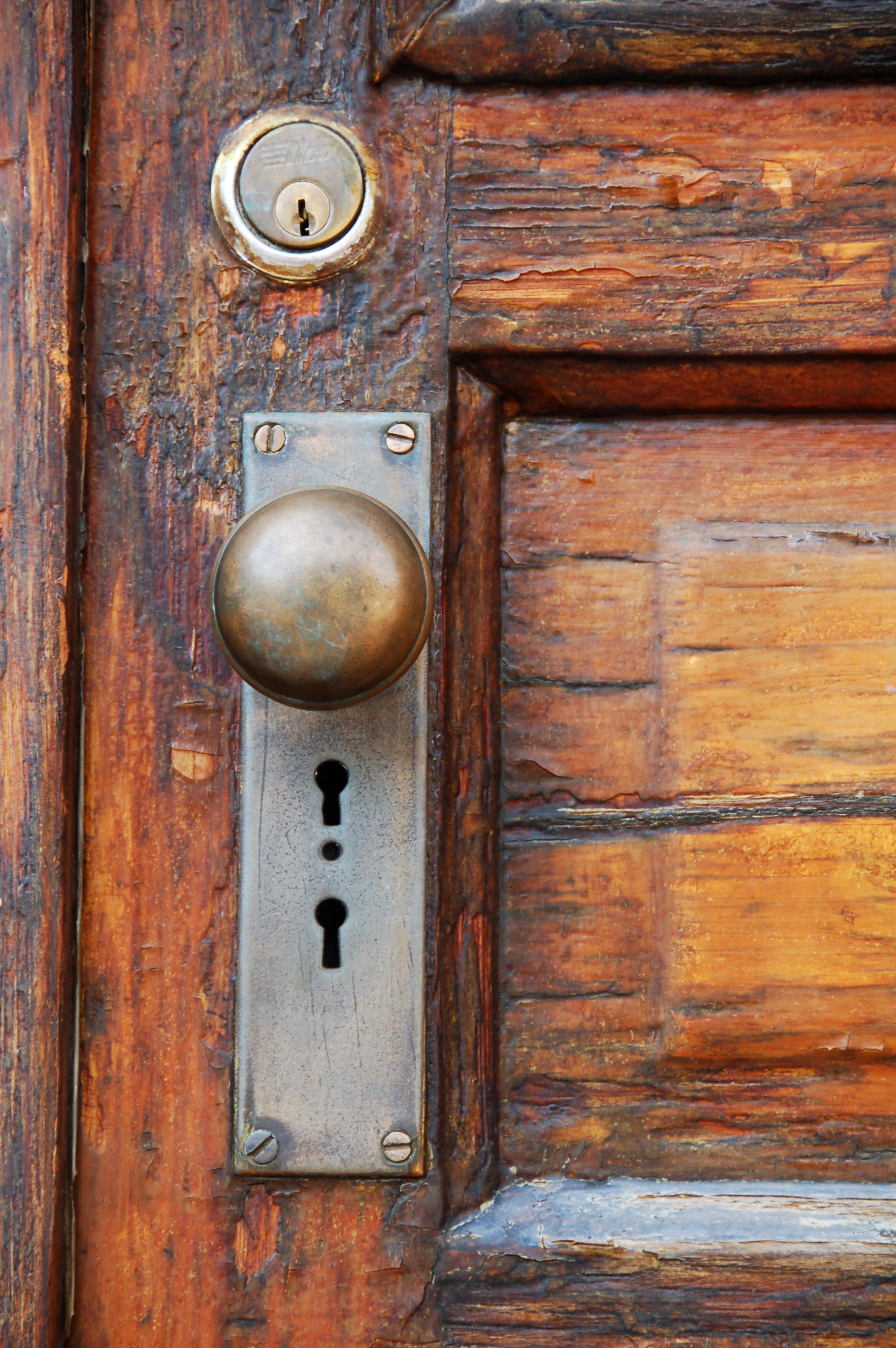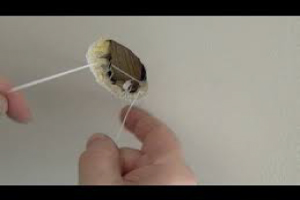
Jump To:
- How To Not Go Bump In The Night
- How To Fix Sticky Door Locks
- Loose Doorknobs Will Drive You Crazy
- Hacking Your Noisy Door Hinges
- Your Hinges Come Unhinged Or Unhooked
- Sticking Doors And Hinges Are Tight
- Busted Key – Wasted Time(Fear Not)
I think you’ll agree with me that home door replacement is expensive, but even so, when an existing door in your home stops working as you’ve come to expect, it can be more than just a minor annoyance. And with new door installation cost being so outrageously expensive, I thought in this article I would share with you some easy step-by-step ideas to solve most of the door problems you’ll ever encounter.
More specifically I’ll give you advice regarding 7 issues that most everybody has dealt with doors at one time or another. In some detail, we’ll write about sticking doors, doors with loose hinges, loose doorknobs, sticky locks, noisy hinges, keyholes that are almost impossible to find, and the dreaded lock with the broken key in it.
If repairs are out of your realm of possibilities, our research has shown that information pertaining to interior door installation is readily available online.
Our article doesn’t address problems encountered by exterior door installers or more specifically storm doors. But for storm door repairs and adjustments, we’ve uncovered an exceptional article by The Natural Handyman entitled, “Storm Door Installation, Repair, And Adjustment.” This detailed article discusses two procedures for making door adjustments via the door closer and the mounting bracket and is well worth the read if you’re having storm door problems.
Murphy’s Law – Is It Real?
I often take way too many things for granted in my life. For example, I open and close the doors in our home hundreds if not thousands of times without so much as a thought of how they usually work as intended. Yet when one sticks or refuses to close or continually squeaks at me I remember that they need some attention to keep performing as I hope they do.
And when a door causes a problem I sometimes think that Mr. Murphy has invaded our home. You know about Murphy’s Law, don’t you?
Murphy’s Law: The law that states if something can go wrong or not it will go wrong and if it can happen sooner or later it will happen sooner rather than later. The law goes on to say that if whatever is going to go wrong could be a minor problem or a major one, it’s always going to be a major problem.
I hate Murphy’s law but I do believe Mr. Murphy exists. Do you?
1. How To Not Go Bump In The Night
Have you stood in the bitter cold at night and fumbled helplessly trying to find the keyhole to get your key into the lock? Or maybe you can remember a time when you were holding a bag of heavy groceries at the door one evening and even though you found the hole for the key it just didn’t seem to fit any longer. I know I’ve experienced both of these situations whether I found the keyhole or not.
Now I realized that key chains can be bought that have small flashlights attached to them and cell phones have apps that will make your phone shine brightly and that most homes have an outdoor light that will light the way to the keyhole.
What’s the bottom line?
Why bother with all the extra stuff when a better solution is available? And once this solution is in place the problem will be solved for good.
The quick and easy fix is to simply dab some glow-in-the-dark paint around the keyhole using a cotton swab or a small paint brush! Never again will you go bump in the night searching for that elusive keyhole.
2. How To Fix Sticky Door Locks
I should have paid stricter attention to the warning signs to prevent the broken key that I just wrote about. What could have I done to prevent a broken key? Simple, just fix the lock by making it easier to turn with the key.
Here’s the deal:
Locks stick because of moisture and because they eventually lose their lubricant. Even expensive locks need to be maintained meaning they need to be lubricated every so often.
Some folks rely on a machine oil such as 3-in-1 to do the job. This is a mistake! The best lubricant is graphite which is dry to the touch meaning you’ll not introduce moisture into the lock.
There are expensive products on the market that are just such a lubricant but why spend the money if you don’t have to?
Simply rub a number 1 or number 2 pencil against the teeth of your key several times. The lead is graphite and will do the job just as well as the expensive lubricant. Insert the key several times into the lock. Repeat this step several times and your lock will be kept in perfect working order.
This maintenance tip works quickly to fix sticky locks but should be done twice a year for best results.

3. Loose Doorknobs Will Drive You Crazy
Doorknobs are held in place with a tiny set screw that screws up against the doorknob shaft. They eventually come loose no matter how tight you make them. And if you try to tighten them too much you run the risk of stripping them or ruining the head of the screw making it almost impossible to get out.
To prevent the set screw from coming loose simply tighten it up as you would normally and then dab a bit of clear fingernail polish on the head. This will keep the screw from working loose. How easy is that?
4. Hacking Your Noisy Door Hinges
Have you ever noticed that hinges squeak and once they start they don’t stop squeaking on their own? Just like locks they need planned maintenance to keep them working properly.
Want to know the best part?
There are several products that can be used to quiet the noise. WD-40, baby oil, petroleum jelly cooking spray and even shaving cream all work quite well to calm the noise.
Just apply whatever lubricating agent you decide to use onto the pin to stop the nagging noise. Who would have thought that this annoying problem could be so easily solved?
5. Your Hinges Come Unhinged Or Unhooked
At times you might find a door in your home that refuses to close easily. It could be any number of things causing this problem. But the last place I ever thought to look when this happened to me was a loose hinge.
I’m still trying to discover how one of the darn hinges got loose, but it did. I struggled for an hour or more before I finally found the problem. When I at long last found it, I just couldn’t believe this was possible because all 3 screws holding it in place were slightly loose.
It gets worse:
In my case, one of the holes where the screw went in was stripped! I suspect this was from my attempting to bang the door closed because, sadly I have to admit, that I had lost my patience at one point.
I thought all was lost meaning I was considering moving the hinge to another location on the door jamb. I hated the thought having to undertake this task which itself requires considerable patience which by now I had determined my lack thereof had already caused this problem. So I did some quick research and much to my surprise I found a simple yet effective solution that was so easy to implement.
Today, right now you can solve this problem by simply soaking a toothpick or two or a wooden match stick in a bit of wood glue and insert the toothpick(s) or match stick into the stripped hole. Let the glue dry and then trim whatever is protruding outside of the hole flush with the door jamb using a utility knife.
The next time you screw the hinge in place the reconditioned hole will securely hold the screw like it had just been used for the first time! Neat little trick, right?
6. Sticking Doors And Hinges Are Tight But
For an in-depth article on sticking doors, an excellent read is found in an article entitled, “How To Fix a Sticky Door” posted by the True Value company. They have explored this problem in greater detail and I strongly suggest giving them a read if our suggestions don’t help.
I mentioned before, I tended to overlook loose hinges when a door was sticking. And in most cases this is true. So if the hinges are tight but the door still sticks obviously the problem is caused by something else. Often the door has swelled from dampness or the floor has shifted a bit meaning a part of the floor might be a bit higher than it was when the door was working as it should be.
Rather than remove the door and block plane the bottom of the door if the door is only sticking slightly there is a much simpler solution that requires much less work and less skill to pull off.
Here’s the step-by-step procedure:
First, duct tape all four edges of a sheet of sandpaper to the floor where the door rubs. Then move the door back and forth over the sandpaper several times until it moves easily. Finally, remove the sandpaper from the floor and test the door for rubbing.
If the door still rubs the floor repeat this process a few times. This simple trick will allow the door to swing with hindrance as it should. How creative is this for a quick and easy fix? We think quite creative.

7. Busted Key – Wasted Time(Fear Not)
One time I put the key into our back door to unlock it. Now, this particular lock had been giving us problems because it was getting more difficult to turn it seemed every time we tried to use it.
I consider myself fairly bright but for some reason, I paid no attention to the warning signs. One would think after using my key several times and discovering that when the key was removed it was slightly bent that would be sufficient to discourage the same course of action but alas, not in my case.
And so as things go, one dreary day, after coming home from a strenuous time of shopping for our monthly food supplies, as I found myself straining to turn the key it snapped off with a quick pop leaving the broken remains of the key inside the lock.
I fought for 2 hours trying to remove the left-over remnants of the key from the lock knowing that if I succeeded I could use my wife’s key and eventually get a spare key made from hers. Alas, to no avail! This next tip might have saved me a lot of time and aggravation if I had known about it.
Now:
Before you attempt what follows try to remove the key piece using a decent set of tweezers. If that doesn’t work put a dab of super glue on the end of the key part that you still have in your hand. Then carefully insert it into the keyhole until it bumps into the piece lodged inside the lock.
Hold the key perfectly still for a minute or so to give the key time to set. After the key parts have been glued together, carefully remove the key from the lock. Hopefully, the whole key will come out and you can get a spare made without having to replace the entire lock.
Well, what do you think about our 7 solutions to 7 disturbing but common problems that have a good chance of visiting your home at one time or another? Do you have other issues with your doors that you’d like to share with us? Feel free to leave a comment.
If you’ve enjoyed this article and found it useful please take a few moments to share it on your favorite social platform. Thanks for reading and we hope to see you next time.



